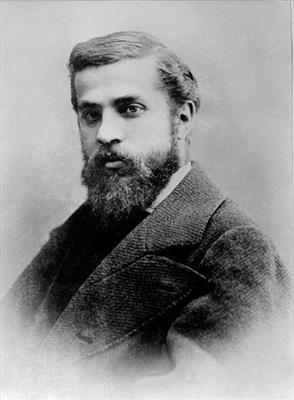Antoni Gaudí Architecture: Unveiling Barcelona's Architectural Gems
If you’ve ever wandered the streets of Barcelona, chances are you’ve encountered the unmistakable architectural marvels of Antoni Gaudí. From the towering spires of the Sagrada Família to the whimsical curves of Park Güell, Gaudí’s creations are synonymous with the vibrant spirit of this Catalan city.
Table of Contents
Introduction to Antoni Gaudí
what is Antoni Gaudí Architecture? Antoni Gaudí i Cornet, born in 1852, was a visionary Catalan architect whose innovative approach to design left an indelible mark on the world of architecture. His work is celebrated for its unique blend of Art Nouveau and Gothic influences, characterized by organic shapes, vibrant colors, and intricate detailing.
Early Life and Education
Raised in Reus, a town in Catalonia, Gaudí showed an early interest in nature and religious symbolism, which would later become defining elements of his architectural style. After studying architecture in Barcelona, he embarked on a career that would revolutionize the landscape of his beloved city.
Architectural Style of Antoni Gaudí
Gaudí was a leading figure in the Modernisme movement, a Catalan interpretation of Art Nouveau. His designs were inspired by the forms and patterns found in nature, resulting in structures that appear to grow organically from the earth.
Key Architectural Works
Gaudí’s portfolio includes several iconic landmarks that have come to define Barcelona’s skyline. Among his most famous works are the Sagrada Família, Park Güell, Casa Batlló, Casa Milà (La Pedrera), and Palau Güell.
Sagrada Família: A Masterpiece in Progress
The Sagrada Família is perhaps Gaudí’s most ambitious undertaking, a monumental basilica that has been under construction for over a century. Its soaring towers and intricate facades are laden with symbolism, reflecting Gaudí’s deep spiritual beliefs.
Park Güell: A Surreal Wonderland
Park Güell is a testament to Gaudí’s imagination, a whimsical park adorned with colorful mosaics, twisting pathways, and fantastical sculptures. Originally conceived as a residential estate, it has since been transformed into a public park and is a UNESCO World Heritage Site.
Casa Batlló: The House of Bones
Casa Batlló is a prime example of Gaudí’s ability to transform ordinary buildings into extraordinary works of art. Its undulating facade, adorned with mosaic tiles and sculpted balconies, is reminiscent of a fairytale castle.
Casa Milà (La Pedrera): An Icon of Modernisme
Casa Milà, also known as La Pedrera, is a striking residential building that showcases Gaudí’s innovative approach to structure and design. Its undulating stone facade and sculptural chimneys have made it one of Barcelona’s most beloved landmarks.
Palau Güell: A Gothic Revival Masterpiece
Palau Güell is a testament to Gaudí’s mastery of Gothic Revival architecture, with its elaborate facade and opulent interiors. Commissioned by industrialist Eusebi Güell, it served as both a residence and a showcase for his wealth and status.
Legacy of Antoni Gaudí
Gaudí’s architectural legacy extends far beyond his lifetime, inspiring generations of architects and designers around the world. His innovative use of materials, attention to detail, and commitment to harmony with nature continue to resonate in contemporary architecture.
Impact on Barcelona’s Identity
Gaudí’s influence on Barcelona’s identity cannot be overstated. His buildings have become symbols of the city, attracting millions of visitors each year and contributing to its reputation as a cultural hub.
Appreciating Gaudí’s Architecture Today
Today, Gaudí’s buildings are not only admired for their beauty but also valued for their cultural and historical significance. Preservation efforts ensure that future generations will have the opportunity to experience these architectural wonders firsthand.
Gaudí’s Enduring Influence
While Gaudí himself may have passed away in 1926, his legacy lives on in the work of contemporary architects who continue to be inspired by his vision and creativity. His buildings remain as relevant and awe-inspiring today as they were over a century ago.
Exploring Gaudí’s Barcelona: Tours and Attractions
For those eager to explore Gaudí’s Barcelona, there are countless opportunities to do so. Guided tours offer insight into the architect’s life and work, while attractions such as the Gaudí House Museum provide a deeper understanding of his creative process.
Conclusion
In conclusion, Antoni Gaudí’s architecture is a testament to the power of imagination and innovation. His buildings not only showcase his extraordinary talent but also serve as reminders of the boundless possibilities of architectural design.
Unique FAQs:
Why is Gaudí’s architecture so unique? Gaudí’s architecture is unique due to its fusion of natural forms, religious symbolism, and innovative structural techniques, which set it apart from traditional architectural styles.
What is the significance of the Sagrada Família? The Sagrada Família is significant for its ongoing construction, unique design, and profound symbolism, representing Gaudí’s lifelong dedication to the project.
How can visitors best experience Gaudí’s architecture in Barcelona? Visitors can best experience Gaudí’s architecture by exploring key landmarks such as the Sagrada Família, Park Güell, and Casa Batlló, either independently or as part of guided tours.
What impact did Gaudí have on the city of Barcelona? Gaudí’s influence on Barcelona is profound, contributing to its identity as a cultural destination and attracting millions of tourists each year who come to marvel at his architectural masterpieces.
What is Gaudí’s legacy in contemporary architecture? Gaudí’s legacy in contemporary architecture can be seen in the continued use of organic forms, innovative materials, and sustainable design principles, which echo his pioneering spirit.

